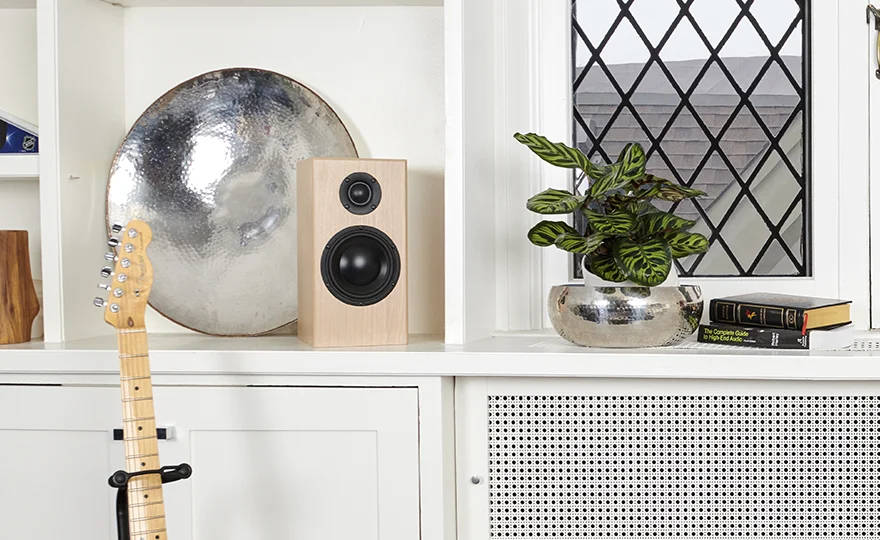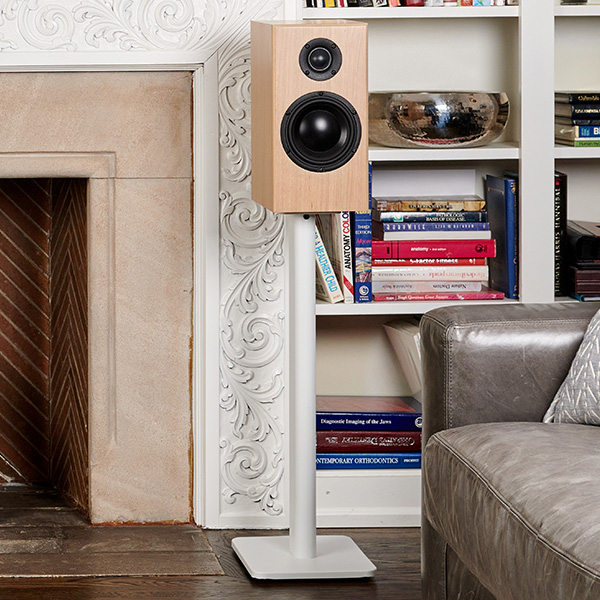
When you’re serious about high-fidelity audio, whether you’re auditioning speakers at home, at a local audio shop or a hi-fi show, it’s crucial to know how to evaluate speaker sound quality—beyond mere specs or brand names. Good speakers enable music to feel alive, believable, and emotionally engaging, while poor ones obscure detail, distort dynamics or render instruments lifeless. In this article we’ll walk you through the process: what to listen for, how to use your ears (and your trusted tracks), what constitutes desirable vs. undesirable speaker behaviour, and how to apply this in different listening contexts (home, shop, show).
Whether you’re auditioning speakers you already own or visiting an audition room, set the stage correctly.
Pick songs you know intimately—tracks you’ve listened to many times and understand how they “should” sound. For example:
The point: you want well-recorded, dynamic material covering a range of instrument types, tonal colours and spatial cues. When you know how the piece should sound, you’re in a better position to judge if a speaker reproduces it faithfully.
What are you evaluating? Key areas:
When listening in your familiar space (or your system), you have an advantage: you know the room, the habits, your favourite tracks. Use this to your benefit.
Begin at moderate volume. Listen to how vocals sound: are they natural, lifelike, or do they seem thin or exaggerated? Play something like Dream On by Aerosmith and focus on the midrange: the singer’s tone, the air around the cymbals, the decay of the guitar.
Then increase volume to where the system is comfortable and the speakers are stressed a little—listen for how they handle transients—the attack of a snare, the pluck of a bass string.
Switch genres: e.g., from rock to jazz to classical. See if the speaker maintains composure across different music types. Large dynamics in a classical work with orchestral crescendos will reveal whether the speaker has headroom and control.
Because you’re in a known room, you can experiment: small moves of the speakers, toe-in, coupling, boundary effects. A good speaker will respond well to placement tweaks; a poor one may just get worse or sound inconsistent.
Desirable characteristics:
Undesirable characteristics:
When you go to an audio showroom, you’re at a disadvantage: you’re in unfamiliar rooms, likely with other gear noise and retail pressures. But you can still evaluate speakers.
Bring your familiar tracks and ask the shop to play them at a comfortable volume. Don’t just listen to “loud wow” moments — listen for consistency and realism.
Sit where the demo position is, then try moving slightly off-axis. A good speaker will keep its character relatively steady; a lesser one might collapse off-axis.
If possible, switch between speakers with minimal system changes. This lets you compare tonal signatures, imaging, bass control. Ask the shop to swap cables, or change positioning if allowed.
Shop demos often play “tracks that sound good” (drums, bass) – ask for something with subtle detail or dynamics. For example, a track like Black Dog by Led Zeppelin (complex drumming, vocals, interaction) or Take Five by Dave Brubeck Quartet (jazzy piano & sax interplay) can reveal more.
Avoid being swayed by price tags, brand reputation or hype. Use your ears. As one audiophile put it,
“Listen to different music … Finding a friend and swapping gear … are great ways to hear how different components complement each other.” Reddit
Your experience counts.
Showrooms may have less-than-ideal acoustics or may use gear that doesn’t fully expose the speaker’s potential. Take notes but defer final judgment until you can listen in your own environment if possible.
Hi-fi shows are fun, but high ambient noise, short sessions and unfamiliar rooms make serious evaluation tricky. Here’s how to get the most out of it.
Pick one or two favourite tracks and listen to them twice: once at moderate volume, once at louder volume. Time is limited so don’t wander across many songs.
Because show rooms are less controllable, pick specific sonic “extremes” to test: maybe a bass-heavy track that you know very well (for instance, Hysteria by Muse) and a track with delicate detail (like Fragile by Sting). Evaluate how the speaker handles both ends.
Notice how the speakers are positioned, how near walls or corners they are, how much “room sound” you hear. A well-designed speaker will still perform respectably even in less-than-perfect placement.
When you walk into a demo, your first few seconds should feel engaging: do you immediately feel pulled into the music, or does it feel thin/flat? Then at the end of the piece, listen to how the sound “lets go”—does the bass stop cleanly? Does the decay vanish or linger unnaturally?
Based on both subjective listening and objective speaker-design considerations, here are key desirable traits.
A great speaker reproduces the tone of instruments and voices accurately; the frequency response is relatively flat (or at least musically balanced) such that nothing dominates or disappears.
The ability to reproduce fine detail—e.g., the subtle texture of a cello bow, the shimmer of a cymbal, decay tails—without sounding harsh, gravelly or congested. Many designers emphasise that even with good measurements, subjective listening tests must confirm that the “magic” is there.
A desirable speaker will take soft passages whisper-quiet and crescendos loud without strain, compression or fatigue. It should retain clarity and definition at high levels.
The sense that the instruments and voices are three-dimensional, placed in a space with depth, width and height—not just coming from two boxes. Good stereo speakers create a “window” you look through rather than two blobs of sound.
Not simply “deep” bass, but bass that is tight, well-defined, and integrates well with mid-range—so that you feel the impact of a kick drum but also hear its articulation. Poor bass control ruins mid-range clarity.
Meaning the speaker continues to behave well as you move away from the central sweet-spot. This matters for real-world listening (family, multiple seats) and indicates thoughtful driver/cabinet/crossover design.
Vibrations, resonances, cabinet colouration undermine all the above. A well-built speaker with good damping, bracing, and appropriately chosen materials will sound better.
Equally important is recognising what to avoid.
If the speaker/mode/placement causes excessive bass that dominates and bleeds, it will muddy the mid-range, reduce clarity, and fatigue the listener.
Over-emphasised high frequencies, aggressive tweeters, or poor driver integration can make cymbals shriek, voices sibilant, high hats bright and fatiguing.
When soft passages lose detail or loud passages sound strained, the effect is “flat” music—not real or engaging.
If everything sounds “in between” the speakers or stuck to the drivers’ face, you lose the immersive experience. It becomes lifeless.
Cabinet rattles, driver flex, poor crossover behaviour — any of these introduce audible anomalies that contaminate the music.
If you hear the tweeter suddenly take over or the bass driver struggle, or if the speaker’s character changes dramatically off-axis, it reflects design compromise.
Here’s a practical sequence you can adopt in any listening context:
In the high-end space, the differences between speakers are often subtle but profoundly meaningful. While hi-fi systems and their components can often be compared using a variety of technical measurements, the ultimate evaluation of sound quality remains a highly personal and subjective experience. Therefore, while measurement graphs, sensitivity, impedance etc matter, your ears are still the final judge.
For a manufacturer or enthusiast in the high-end arena, the room, electronics, source, amplification, and indeed your own listening habits all combine to impact the final outcome. A well-designed loudspeaker that has the virtues described above will enable you to feel the music, not distract you with design limitations.
Evaluating speaker sound quality is both an art and a science. By preparing with well-known tracks, focusing on specific sonic cues (bass articulation, mid-range clarity, treble smoothness, imaging) and by listening critically in different environments (home, shop, show), you’ll elevate your ability to judge high-end speakers. Look for tonal balance, dynamic agility, imaging precision and room friendliness; avoid colouration, hiss/harsher treble, muddy bass and lack of dynamics. In the end, the best loudspeaker is one that disappears and allows you to become immersed in the music, whether it’s the candle-lit intimacy of a piano-vocal track or the raw power of a rock anthem.
If you found this article useful and would like to read more on related topics—perhaps speaker placement, room acoustics, amplifier matching or high-end audio trends—please explore our News + Reviews section: https://totemacoustic.com/news-and-reviews
Share this article with your friends!
